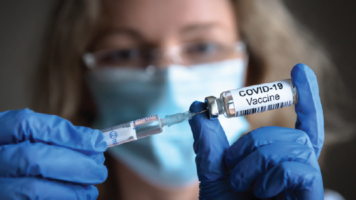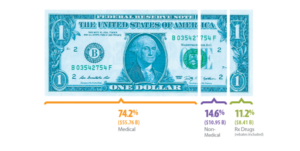Industry News
DMHC Reports Health Premiums Primarily Increased Due to Health Plan Profits, Not Rx Drugs
February 2021
The California Department of Managed Health Care (DMHC) released a report on December 30, 2020 concluding that prescription drug expenditures are still lower than they were in 2017. The report was compiled based on health plan reporting mandated by Senate Bill 17 which requires health plans and health insurers that file rate information with the DMHC or the California Department of Insurance to annually report specific information related to the costs of covered prescription drugs.
According to the DMHC Report, “Manufacturer drug rebates increased by almost 14% in 2019 and totaled approximately $1.205 billion compared to $1.058 billion in 2018. These rebates helped mitigate some of the overall impact of rising prescription drug prices by reducing total health plan premiums by 1.6% in 2019.”
Health Premium Expenditures Between 2018 to 2019
While total health plan premiums increased by 5.3% between 2018 and 2019, the amount of premium dollars that went to health plan profits increased by 27.5%.
How are Health Plan Premium Dollars Spent?
DMHC found that, in 2019, more of the California premium dollar went to non-medical expenses than it did prescription drugs. In fact, after accounting for rebates, health plans spent almost $2.5 billion more toward non-medical expenses than for prescription drugs in 2019.
How do Biopharmaceutical Manufacturer Rebates Factor into the Equation?
According to the DMHC report, biopharmaceutical manufacturers offered over $1.2 billion in rebates in 2019. Unfortunately, these rebates aren’t passed on to patients as those rebate savings are often retained by the health plan.
Medicines Reduce Health Care Costs and Support Overall Patient Care
Prescription medications increase positive health outcomes. They help patients live healthier lives and reduce the need for more costly health care services. Patients who adhere to their medications enjoy better health outcomes and make less use of emergency room visits, hospital stays, surgeries and long-term care – which results in savings to the health care system overall.
No other factor driving the cost of health plan premiums increased as much as the profit margin. Overall, premium costs rose by $3.8 billion to $75.12 billion in 2019, and roughly 27.5% of the increase was due to insurer profit. Health plan profit is at least twice as much as any other cost driver.
To read the full report, visit DMHC website HERE




